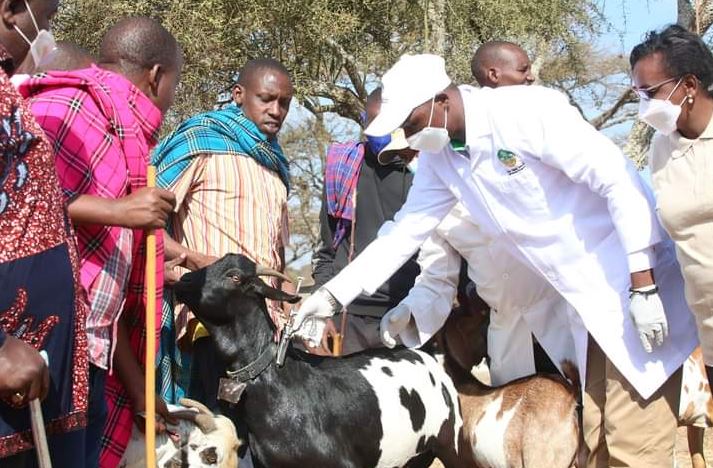 Barely six months after President William Ruto promised to vaccinate 22 million cattle and 50 million sheep and goats, the nationwide campaign has ground to a halt for one simple reason: there is no money.
Barely six months after President William Ruto promised to vaccinate 22 million cattle and 50 million sheep and goats, the nationwide campaign has ground to a halt for one simple reason: there is no money.
Kenya Veterinary Paraprofessional Association chair John Ngigi broke the news at the group’s annual conference in Naivasha on Monday.
“We understand that the exercise was called off due to a lack of money, and this will have significant repercussions on livestock production in the coming months,” he told delegates.
The pause leaves herders in arid counties exposed to Foot-and-Mouth Disease (FMD) and Peste des Petits Ruminants (PPR)—high-impact diseases the drive was meant to curb and, ultimately, keep export markets open.
Why the wheels came off
- Budget hole: Treasury was expected to bankroll the first phase, estimated at Ksh 3.95 billion. By March, officials admitted the cash was not forthcoming and asked farmers to pay upfront.
- Idle supply lines: The state-owned KEVEVAPI factory had geared up to produce millions of doses but has now slowed production.
- Political headwinds: Wiper leader Kalonzo Musyoka labelled the plan “reckless” and alleged it served “sinister foreign interests,” urging farmers to resist.
Agriculture officials insist the vaccines are locally made and perfectly safe. Then-Cabinet Secretary Andrew Karanja reassured producers that “there are no ulterior motives—only a bigger export market for Kenyan meat.”
Yet with the government short of cash, the burden has shifted to herders already battling high feed costs and drought stress. Under the cost-sharing plan they would repay the state after selling their animals.
| Vaccine | Targets | Proposed price (Ksh) |
|---|---|---|
| PPR | Sheep & goats | 35 |
| FMD | Cattle | 100 |
If vaccination stalls through the dry season, vets warn of fresh FMD flare-ups that could slam shut Gulf and East African export markets just as prices start to recover. A single outbreak can wipe out up to 80 percent of productivity in affected herds, according to the Directorate of Veterinary Services.
For now, Ngigi says paraprofessionals are “on standby” but can do little without doses to deliver. Farmers, meanwhile, are left wondering whether to dig into already-thin wallets or watch their stock risk disease.
The Ministry of Agriculture has yet to publish new dates—or a funding plan—to restart the campaign. Herders will be listening closely; their livelihoods depend on more than promises.